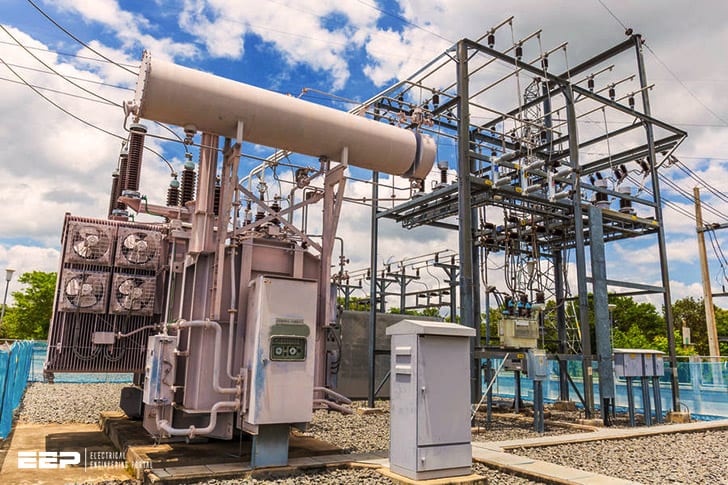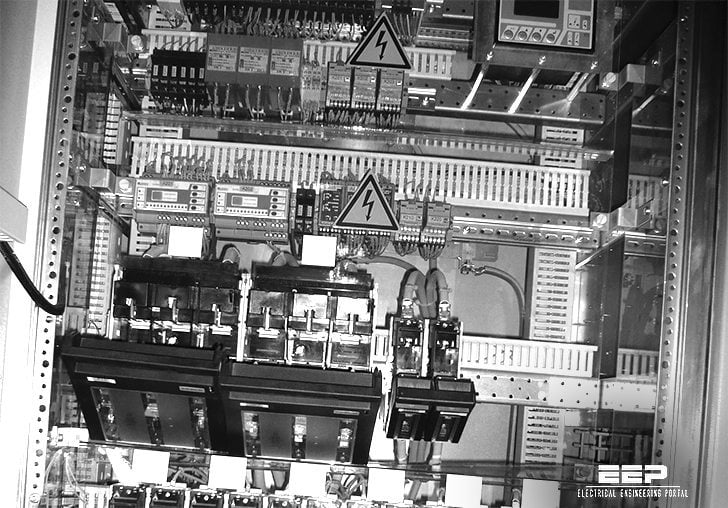A modular substation is a power substation composed of prefabricated modules that are shipped to the site and then assembled on-site. This type of substation is typically used for voltage levels of 72.5 kV and below.
A modular substation is a prefabricated, plug-and-play solution for power distribution. It comes in modules that can be easily assembled on site, making it a quick and cost-effective way to set up a substation.
Modular substations have many benefits over traditional substations.
For one, they are much easier and faster to install. This is because all the components are pre-fabricated and just need to be plugged in on site. There’s no need for custom engineering or construction, which can save a lot of time and money.
Another benefit of modular substations is that they are more flexible and scalable. If you need to expand your substation, you can simply add more modules. And if you need to move your substation, you can just disassemble it and reassemble it at the new location.
This is much easier than trying to relocate or expand a traditional substation.
If you’re looking for a power distribution solution that is quick to install and scalable, then a modular substation might be the right choice for you.
TGOOD modular prefabricated substation
Skid Mounted Substation
In the electricity sector, a skid-mounted substation is a type of substation built on a steel frame that can be easily transported and installed. The term “skid” refers to the fact that the substation is mounted on a skid, or platform, that allows it to be moved around without having to disassemble the entire structure.
Skid-mounted substations are typically used in situations where it is not feasible or economical to build a traditional brick-and-mortar substation.
They are commonly used in remote locations, such as in rural areas or in mountainous terrain, where construction of a conventional substation would be difficult. Skid-mounted substations can also be used as temporary solutions in cases where additional capacity is needed but there is not enough time or space to build a permanent facility.
One advantage of skid-mounted substations over traditional ones is that they can be quickly and easily installed.
In most cases, all that is required is level ground and access to an existing power line. Skid-mounted substations can also be relocated if necessary. This flexibility makes them well suited for use in rapidly changing environments, such as during emergency response efforts after natural disasters.
Another benefit of skid-mounted substations is that they tend to be less expensive than traditional ones. This cost savings comes from several factors, including the fact that less material is required and construction costs are lower since no foundation needs to be built. Additionally, installation costs are typically lower since skid-mounted units can often be installed using existing infrastructure (e.g., roads and power lines).
Despite their many advantages, skid-mounted substations do have some limitations. One challenge associated with these units is making sure that they are properly anchored so that they do not move or shift during operation (which could cause damage). Additionally, because they are typically smaller than traditional brick-and mortar Substations ,they may need to be located closer to load centers , which could limit site selection options .
Eaton Integrated Power Center
Eaton’s Integrated Power Center (IPC) is a complete, pre-wired and factory- tested solution that combines all the components needed to quickly connect backup power to essential loads in a single enclosure. The IPC includes an Eaton 9355 uninterruptible power supply (UPS), circuit breakers, transformer and distribution modules, cabling and accessories. This turnkey solution can be easily configured to meet the specific needs of your application.
The IPC is ideal for small data centers, server rooms and network closets. It is available in two sizes: 6 kVA or 10 kVA. Both models come with an integrated maintenance bypass switch, which allows for safe testing and maintenance of the UPS without disrupting critical loads.
The IPC also has an optional battery module that provides extended runtime for mission-critical applications.
The IPC is a convenient way to provide clean, uninterrupted power to your most important equipment. It is easy to install and comes with everything you need to get up and running quickly.
Eaton Modular
Eaton’s modular products are designed to provide flexibility and scalability in a variety of applications. The products are available in a variety of configurations and can be customized to meet the specific needs of the application. Eaton’s modular products are available in both standard and custom configurations.
Eaton Mits
Eaton is a world leader in the design and manufacture of a comprehensive range of power management products, systems and solutions. Innovation is at the heart of Eaton’s success, and we are constantly looking for new ways to improve the performance of our products and services. Our focus on innovation has led to the development of groundbreaking technologies that have revolutionized the way power is managed and used.
Eaton’s Mitsubishi Electric Power Products business provides a complete line of electrical distribution equipment including circuit breakers, switchgear, busway, uninterruptible power supplies (UPS), metering products, transformers and motor control centers. This business also offers engineering services supporting these products.

Credit: se-energy.com
What are the Three Types of Substations?
A substation is an electrical installation where generation, transmission, distribution, and utilization of electric power take place. It generally contains a step-down transformer to change the voltage from high to low for distribution purposes and may also have switches to control the flow of electricity.
There are three types of substations:
1) Transmission Substations
2) Distribution Substations
3) Industrial Substations
Transmission substations connect two or more parts of the electric power system and act as a switchyard for high-voltage electricity. The purpose of a transmission substation is to take in electricity at high voltages, typically between 115 kV to 765 kV, and output it at slightly lower voltages for use on the grid. These substations are usually located away from population centers because they use large transformers that produce harmful ozone emissions.
The largest transformers can weigh hundreds of tons each.
Distribution substations distribute electricity at a lower voltage (usually between 2 kV and 35 kV) to customers through medium-voltage lines. A typical distribution substation might have several feeder circuits going out from it providing service to nearby homes or businesses.
Medium-voltage circuit breakers and fuses protect equipment and consumers by opening up or breaking the circuit when there is an overload condition. These devices are often located outdoors on metal poles or towers so that they can be easily seen by line crews who need to access them quickly in case of an outage. Many times these devices will have some type of alarm system connected to them so that if there is an issue with the breaker, someone will know about it right away and can come fix the problem before it causes an outage on the distribution system.
Industrial Substations are used in factories or other industrial facilities where large amounts of electricity are required for production processes such as welding, crushing, etc.. These substations usually have voltages above 35kv & up past 230kv; however some industrial loads require very high voltages such as 500kv & 765kv which would require a special type of transformer known as a generator step-up transformer (GSU).
What is the Purpose of a Substation?
A substation is a critical part of the electrical power grid. Its purpose is to take the high-voltage electricity from the transmission lines and transform it into a lower voltage that can be used by homes and businesses. The substation also includes equipment to help regulate the flow of electricity, protect against power surges, and provide a safe place for workers to maintain the equipment.
How Much Does a Mobile Substation Cost?
Assuming you are referring to a portable, trailer-mounted substation (as opposed to a semi-permanent installation), the cost will vary depending on the size and features of the unit. A basic, 50kVA mobile substation might cost around $50,000, while a larger 200kVA unit could cost $100,000 or more. Of course, these prices are just for the substation itself and do not include the cost of installation or other associated costs.
Is There a Problem Living Next to a Substation?
No, there is not a problem living next to a substation. In fact, many people find it quite convenient to have a substation nearby in case of an emergency.
Conclusion
A modular substation is a power substation in which the equipment is clustered around a module or modules. The concept is to use standard, off-the-shelf components to build up the substation, rather than customizing each installation. This approach can save time and money, as well as make it easier to maintain and upgrade the substation over time.


